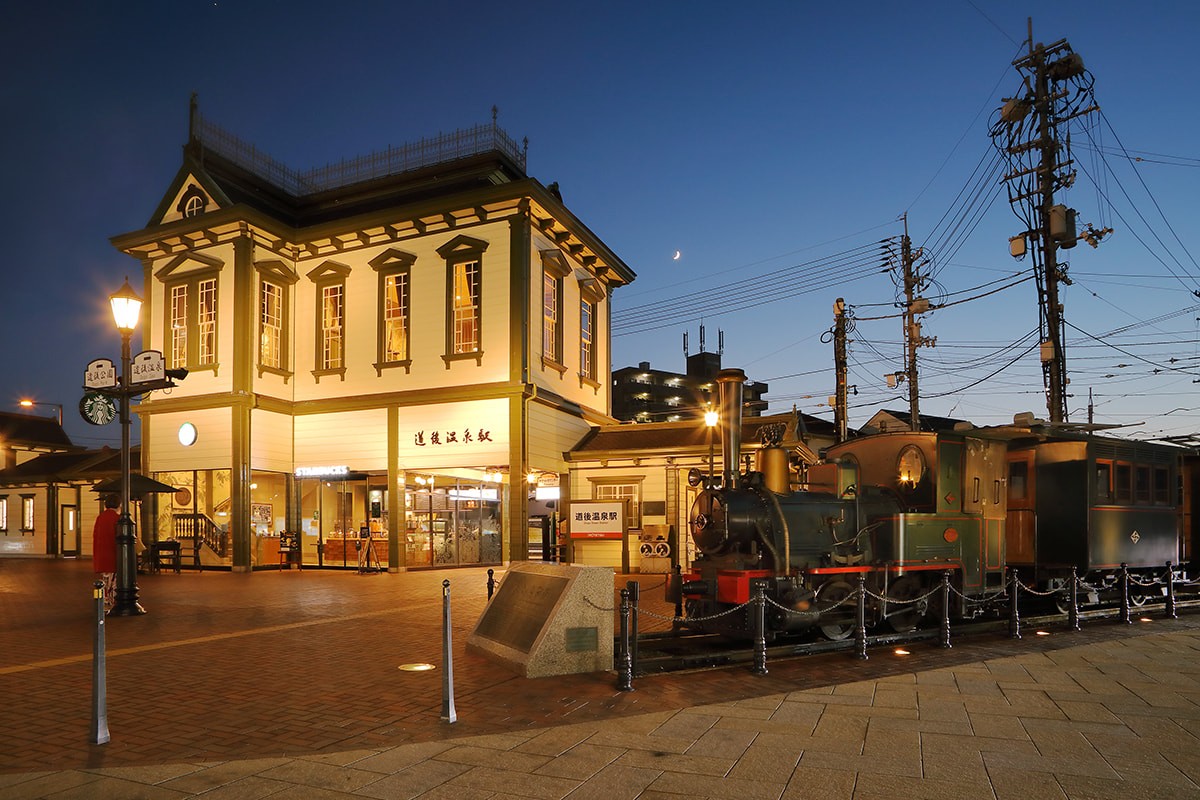
Ehime Prefecture is the most populous prefecture among the four prefectures of Shikoku region. There are "Dogo Onsen", which is counted as one of Japan's three oldest hot springs, "Matsuyama Castle" and "Uwajima Castle", which are included in the 12 existing castle towers, and the world-famous "Imabari Towel". But do you know any Ehime's famous food? This time, we will focus on the charm of Ehime's local gourmet!
What is "B-grade gourmet"?
Unlike traditional local cuisine that represents the region, B-class gourmet does not use the unique Japanese cooking methods or gorgeous seasonal presentations that attract the attention of tourists. It is a comfort food that is cooked with local ingredients and has been loved by local people for a long time.
Characteristics of Ehime gourmet

Geographically, Ehime Prefecture is blessed with many sunny days and a warm climate. In particular, the side bordering the Seto Inland Sea is suitable for mandarin orange (or 'mikan' in Japanese) cultivation because of its mild climate with little rain and soil rich in minerals. Thanks to that, Ehime's mandarin orange production ranks top class in Japan. By 2019, there are 41 varieties of citrus fruits, and in 2020, the production volume of mandarin oranges was the highest in Japan. Undoubtedly, the variety of mandarin orange-related products makes the prefecture a true "Citrus Kingdom".
Another natural blessing is the Uwa Sea. The warm 'the Kuroshio Current' of the Pacific Ocean flows in and brings abundant nutrients and minerals that contribute to fatty fishes. The conditions are perfect for cultivating sea bream (鯛 / tai), and among them, Ehime's brand sea bream "Aitai" (愛鯛) is the highest quality brand fish in Japan.
Ehime B-grade Gourmet
Ehime Prefecture's B-grade gourmet is inextricably linked to mandarin oranges and seafood. Mandarin oranges are often used in desserts, but this time we will focus on local gourmet foods that can be used both as a meal or as a side dish.
Sea Bream Rice (tai-meshi)

Ehime boasts the highest catch of wild sea bream in Japan, and the production of farmed sea bream has been No. 1 in Japan since 1990! In Ehime Prefecture you can see sea bream everywhere and sea bream gourmet can be eaten throughout the prefecture. Among them, the famous tai-meshi (鯛めし - sea bream rice) is cooked differently depending on the region.
One representative sea bream rice is the "Hojo tai-meshi" (北条鯛めし) sea bream rice from Matsuyama City on the eastern part of the prefecture, which uses a whole sea bream and is cooked together with rice. While "Uwajima tai-meshi" (宇和島鯛めし) from Uwajima City in the southern part of the prefecture is made by placing sea bream sashimi on top of white rice and pouring a sauce that is a mixture of raw egg, dashi stock, sesame seeds, soy sauce, etc. There is also the "Matsuyama Aburi tai-meshi" (松山あぶり鯛めし) topped with seared wild sea bream which is different from Hojo tai-meshi and Uwajima tai-meshi.
Tachiuo-maki (largehead hairtail fish wrapped on stick)
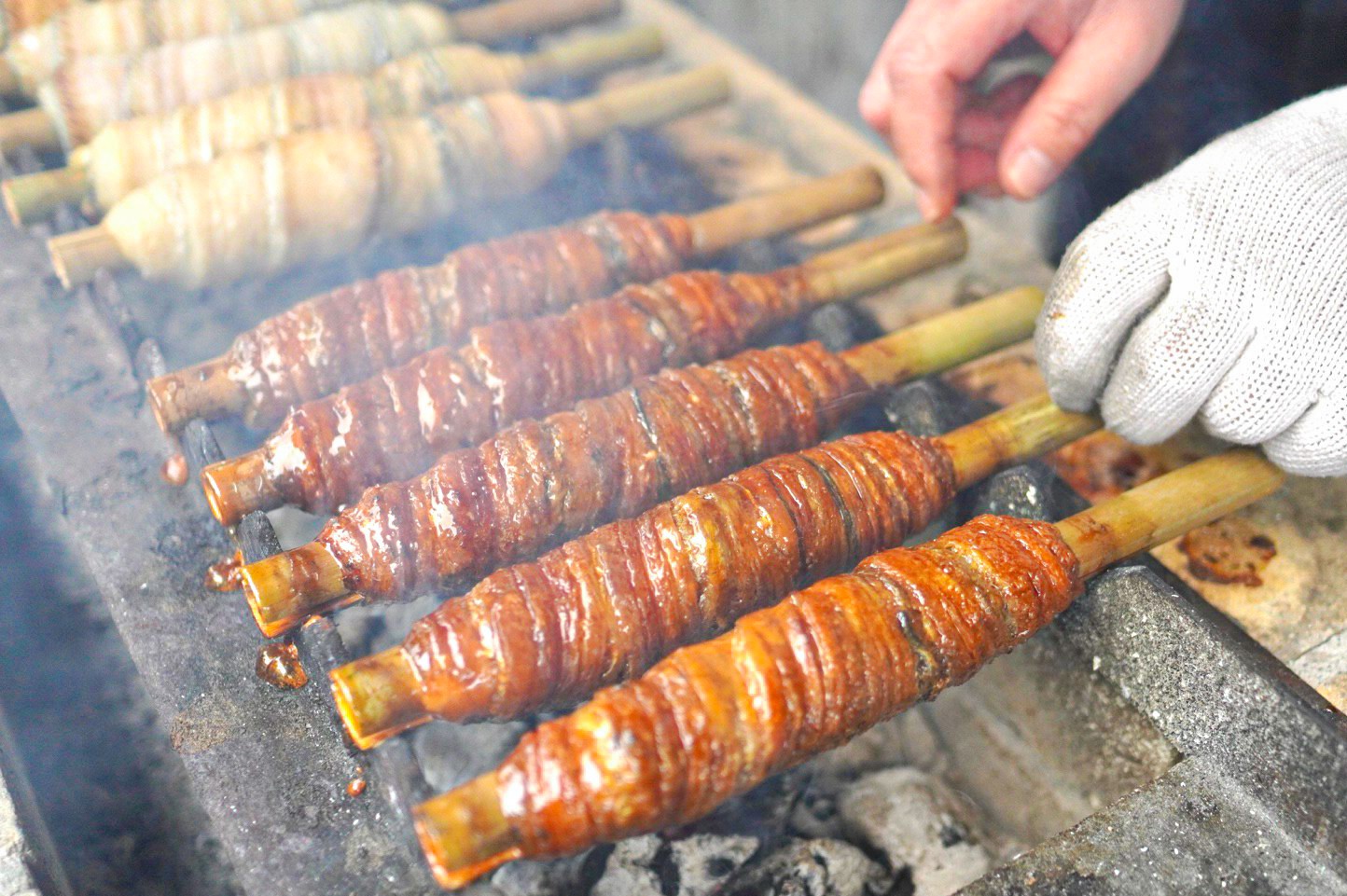
Speaking of Ehime gourmet food, not only sea bream is unmissable but also the visually impressive "Tachiuo-maki" (太刀魚巻き - largehead hairtail fish wrapped on stick)).
"Tachiuo-maki" is a B-grade gourmet that was originally invented by a long-established fishmonger in Uwajima City, Ehime Prefecture. Hairtail fish or "tachiuo" is rich in high-quality fat, DHA, and vitamins. Such hairtail fish is thinly sliced into strips, spirally wrapped around natural bamboo skewers, dipped in a special sauce and grilled. When cooked, it turns into an appetizing amber color and has a fragrant aroma.
Jakoten
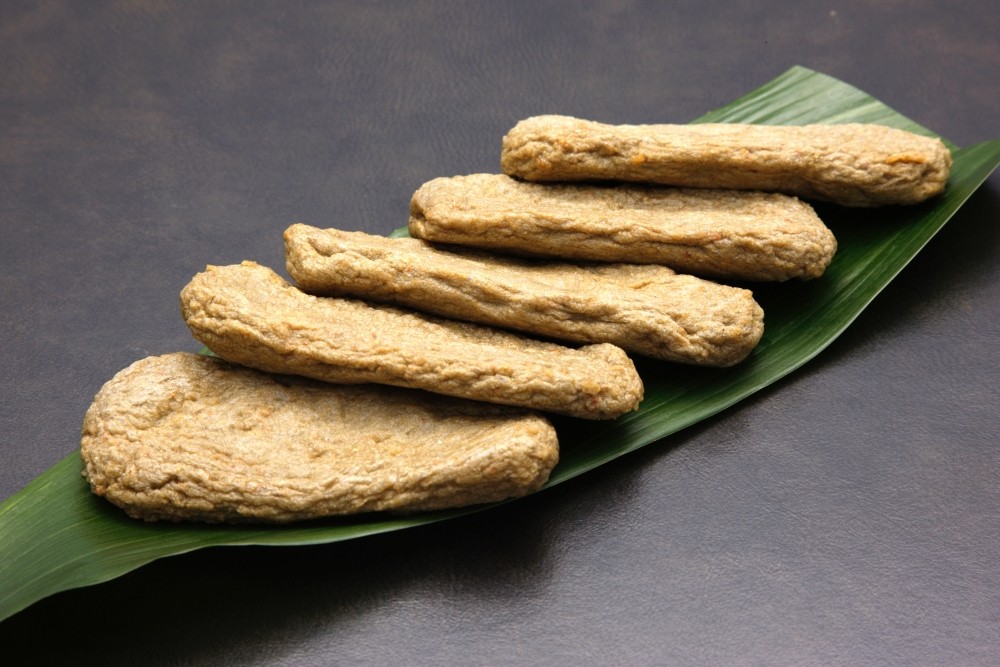
Jakoten (じゃこ天) is a fish paste product made by mashing various kinds of small fish, mixing them with eggs and flour and then fried. It is a local specialty of areas where the production of processed fish products is thriving, such as Yawatahama City, where abundant fish can be caught from the Uwa Sea, and Uwajima City. Because it contains fish bones, it has a flavor that is as good as other paste foods, and it goes well with a variety of dishes. It is characterized by good compatibility with matches everything from snacks for alcoholic beverages to noodle dishes - there are quite a few households In Ehime who say that it is "an essential part of their daily dining table".
Imabari Grilled Pork and Egg Rice

Born in Imabari City, this B-grade gourmet dish started when a chef at a local Chinese restaurant devised it for himself as staff meal. It's quick and easy to make - top the rice with chopped char siu (Chinese BBQ) pork and a soft-boiled egg, then add char siu sauce and pepper, then it's done! It's a hearty menu that will give you stamina. Originally, it was a very popular menu at local Chinese restaurants until it has been commercialized in earnest. The simple and dynamic taste has become popular among high school boys and is now a local specialty of Imabari.
Mitsuhama-yaki
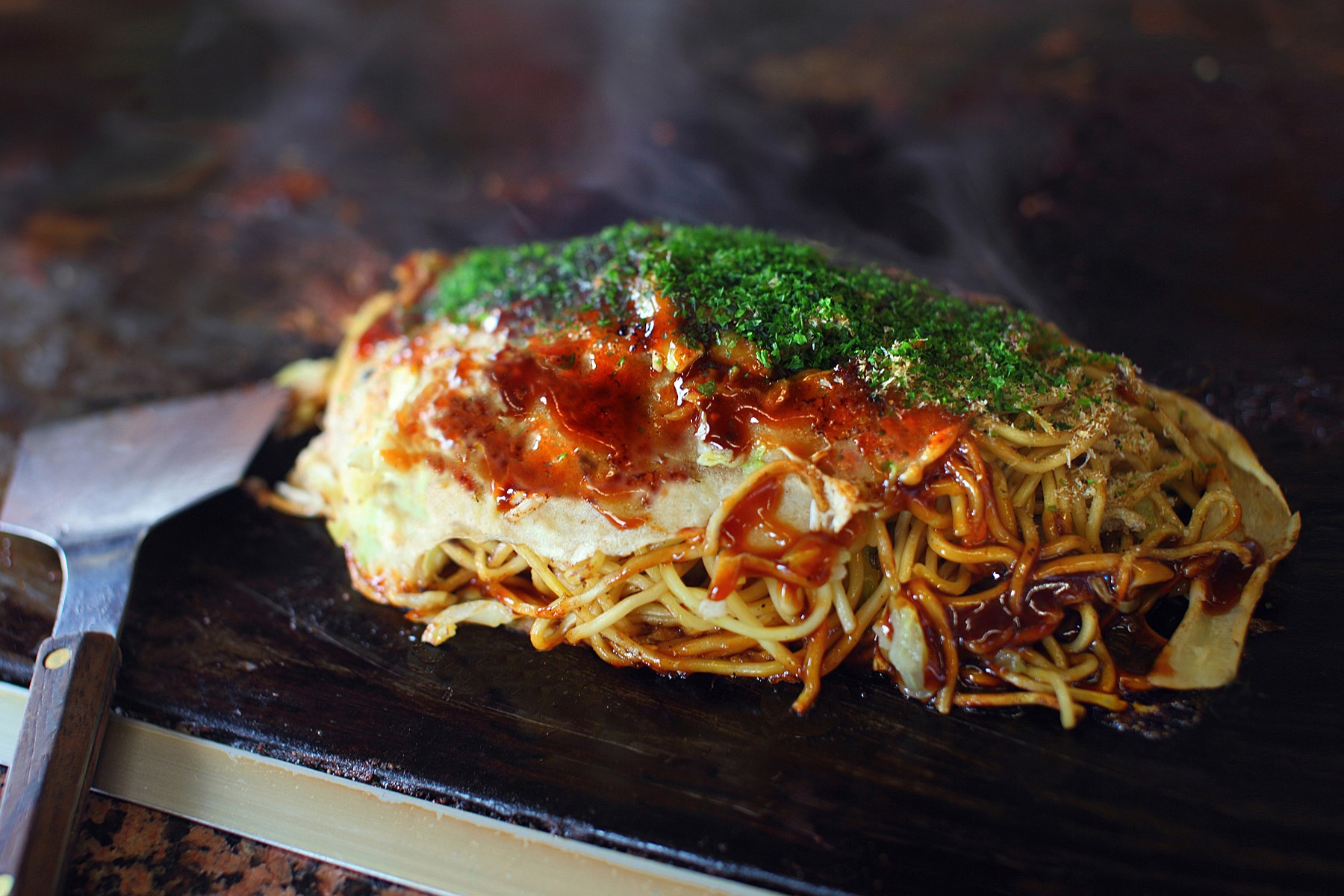
In short, it is the okonomiyaki which contains cabbage, eggs, yakisoba or udon noodles, and local chikuwa sold at restaurants in Mitsuhama, Matsuyama City. It is characterized by the umami and texture of the fish and shellfish in the chikuwa, and is served in a half-moon shape folded in half. This is loved by the locals and is said to be the soul food of the Mitsuhama district.
Related articles
- 【Japanese Gourmet】Affordable Local Gourmet Foods Pilgrimage: "Shizuoka" Edition
- 【Japanese Gourmet】Affordable Local Gourmet Foods Pilgrimage: "Fukuoka" Edition
- 【Japanese Gourmet】Affordable Local Gourmet Foods Pilgrimage: "Nara" Edition
- 【Japanese Gourmet】Affordable Local Gourmet Foods Pilgrimage: "Osaka" Edition
- 【Japanese Gourmet】Affordable Local Gourmet Foods Pilgrimage: "Aichi" Edition
- 【Japanese Gourmet】Affordable "Hokkaido" Local Gourmet Foods Pilgrimage: Northern and Eastern Hokkaido Edition
- 【Japanese Gourmet】Affordable "Hokkaido" Local Gourmet Foods Pilgrimage: Central and Southern Hokkaido Edition
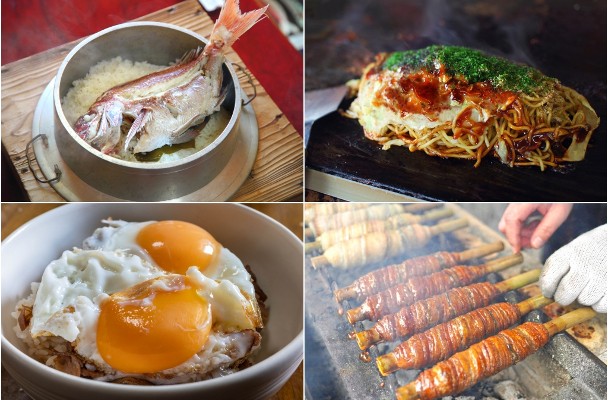

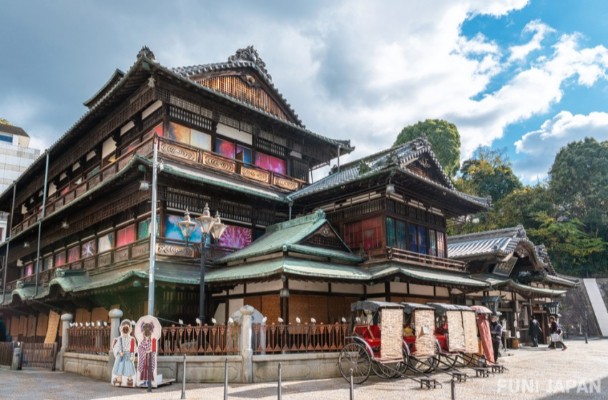
Comments